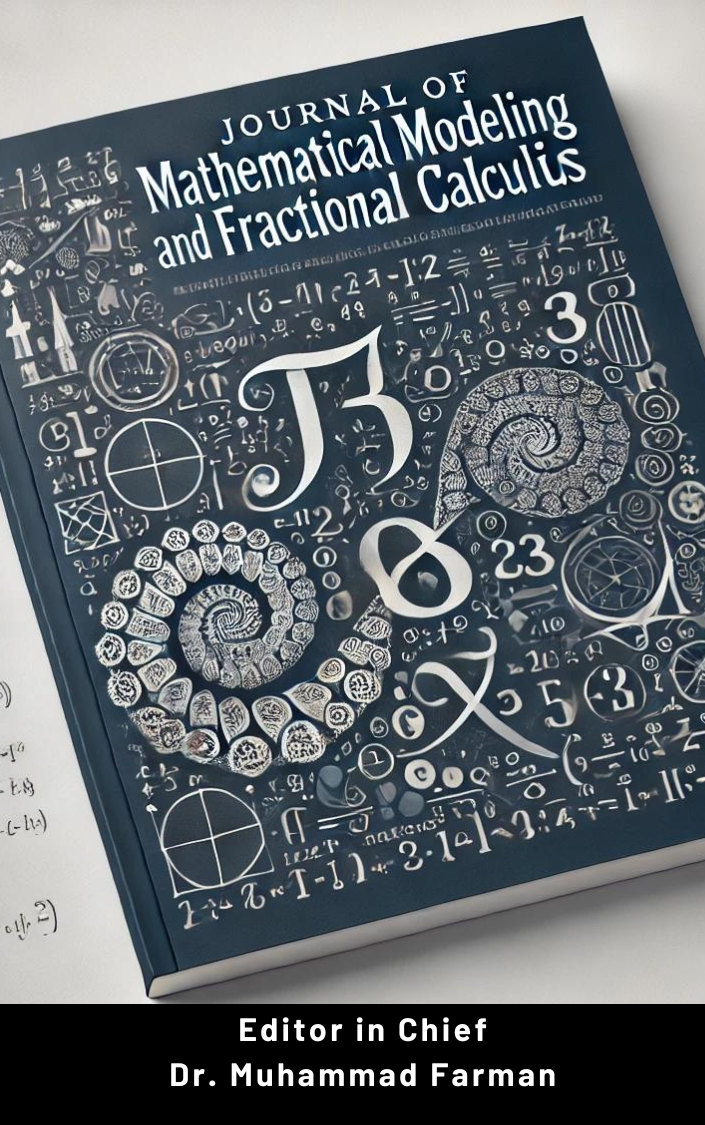Uniqueness, stability analysis and approximate solution of a fractional order COVID-19 Model
DOI:
https://doi.org/10.48165/jmmfc.2024.1101Keywords:
Sumudu transform, Uniqueness, Sensitivity Analysis, Numerical SchemeAbstract
In this paper, we investigate a fractional model for the COVID-19 epidemic that contains an antiretroviral treatment compartment. We implement novel methods to acquire effective results. We discuss equilibrium point, reproductive number, and sensitivity analysis. We utilize the Sumudu transform technique to obtain approximate solutions for the model, and we explore chaos control to assess stability around equilibrium points. We demonstrate the numerical simulations to prove the accuracy of the proposed techniques. The graphs illustrate how varying fractional orders impact the dynamics of each epidemiological group, revealing the memory and time-dependent effects on disease spread and control strategies.
References
1. W. Gao, P. Veeresha, D.G. Prakasha, HM. Baskonus and G. Yel. New approach for the model describing the deathly disease in pregnant women using Mittag-Leffler function. Chaos, Solitons and Fractals (2020), 134, 109696.
2. M. Goyal, H.M. Baskonus and A. Prakash. An efficient technique for a time fractional model of lassa hemorrhagic fever spreading in pregnant women. The European Physical Journal Plus (2019) 134, 482.
3. D. Kumar, J. Singh, M. Al Qurashi and D. Baleanu. A new fractional SIRS-SI malaria disease model with application of vaccines, antimalarial drugs, and spraying. Advances in Difference Equations 2019, 2019 (1-19).
4. S. Jamil, P.A. Naik, M. Farman, M.U. Saleem, A.H. Ganie. Stability and complex dynamical analysis of COVID-19 epidemic model with non-singular kernel of Mittag-Leffler law. Journal of Applied Mathematics and Computing, 2024, (1-36).
5. Ahmad. A Review of COVID-19 (Coronavirus Disease-2019) Diagnosis, Treatments and Prevention. Authorea Preprints 2022, 4(2), 116-125.
6. R.N.Thompson, T.D. Hollingsworth, V. Isham, D. Arribas-Bel, B. Ashby, T. Britton, P. Challenor, L.H. Chappell, H. Clapham, N.J. Cunniffe, A.P. Dawid. Key questions for modelling COVID-19 exit strategies. Proceedings of the Royal Society B 2020, 287, 20201405.
7. M. Caputo, M. Fabrizio. A new definition of fractional derivative without singular kernel. Prog. Fract. Differ. Appl. (2015) 2, 73–85.
8. A. Atangana, D. Baleanu. New fractional derivatives with nonlocal and non-singular kernel Theory and application to heat transfer model, arXiv preprint arXiv:1602.03408 (2016).
9. M. Farman, M.U. Saleem, M.F. Tabassum, A. Ahmad, M.O Ahmad. A Linear Control of Composite model for Glucose Insulin Glucagon, AinShamas Engineering Journal (2019),10, 867-872. 10. M. Farman, M.U. Saleem, A. Ahmad, S. Imtiaz, M.F. Tabassm, S. Akram, M.O. Ahmad. A Control of Glucose Level in Insulin Therapies for the Development of Artificial Pancreas by Atangana Baleanu Fractional Derivative, Alexandria Engineering Journal (2020), 59, 2639-2648. 11. M. Farman, A. Akgül, D. Baleanu, S. Imtiaz, A. Ahmad. Analysis of Fractional Order Chaotic Financial Model with Minimum Interest Rate Impact, Fractal and Fractional (2020) 4, 43. 12. Y. Zi and Y. Wang. (2019). Positive solutions for Caputo fractional differential system with coupled boundary conditions. Advances in Difference Equations (2019), (2019) 1-12.
13. M. Toufik, A. Atangana. New numerical approximation of fractional derivative with non-local and non-singular kernel: Application to chaotic models. Eur. Phys. J. Plus (2017) 132,444. 14. Z. Liu, Y. Ding, C. Liu and C. Zhao. Existence and uniqueness of solutions for singular fractional differential equation boundary value problem with p-Laplacian. Advances in Difference Equations (2020), 2020, 83.
15. Y. Wang and L. Liu. Uniqueness and existence of positive solutions for the fractional integro differential equation. Boundary Value Problems (2017), 2017, 1-17.
16. H. Azhar, B. Dumitru, Y. Saman. On a nonlinear fractional-order model of novel coronavirus (NCOV-2019) under AB-fractional derivative. Journal of Mathematical Extension (2021), 15. 17. M.A Khan, A. Atangana. Modeling the dynamics of novel coronavirus (2019- NCOV) with fractional derivative. Alexandria Eng J (2020), 59(4), 2379-2389.
18. A. Atangana, E. Bonyah, A.A Elsadany. A fractional order optimal 4D chaotic financial model with Mittag-Leffler law, Chinese Journal of Physics, (2020). 65, 38-53.
19. J.T Wu, K. Leung, G.M. Leung. Nowcasting and forecasting the potential domestic and international spread of the 2019-nCoV outbreak originating in Wuhan, China: a modelling study. The Lancet (2020) 395, 689–697.
20. B. Tang, N. Bragazzi, Q. Li, S. Tang, Y. Xiao, W. Jianhong. An updated estimation of the risk of transmission of the novel coronavirus (2019-nCov). Infect. Dis. Model (2020),5, 248–255. 21. E.K. Akgül. Solutions of the linear and nonlinear differential equations within the generalized fractional derivatives, Chaos: An Interdisciplinary Journal of Nonlinear Science (2019) 29 (2), 023108.
22. A. Atangana, A. Akgül. Can transfer function and Bode diagram be obtained from Sumudu transform, Alexandria Engineering Journal (2020), 59, 1971-1984.
23. M.S. Hashemi, D. Baleanu. Lie symmetry analysis of fractional differential equations, CRC Press (2020).
24. M.S. Hashemi, M. Inc, A. Yusuf. On three-dimensional variable order time fractional chaotic system with nonsingular kernel, Chaos, Solitons and Fractals (2020), 133, 109628.
25. M.S. Hashemi, A. Akgül. Solitary wave solutions of time-space nonlinear fractional Schrodinger's equation: Two analytical approaches, JOURNAL OF COMPUTATIONAL AND APPLIED MATHEMATICS (2018), 339, 147-160.
26. M.S. Hashemi. A novel approach to find exact solutions of fractional evolution equations with non singular kernel derivative, Chaos, Solitons & Fractals (2021), 152, 111367.
27. H. Li and Y. Wu. Dynamics of SCIR Modeling for COVID‐19 with Immigration. Complexity (2022), 2022, 9182830.
28. P. Shao and S. Shateyi. Stability analysis of SEIRS epidemic model with nonlinear incidence rate function. Mathematics (2021), 21, 2644.
29. H. Youssef, N. Alghamdi, M.A. Ezzat, A.A. El-Bary, A.M. Shawky. A New Dynamical Modelling of the Epidemic Diseases to Assessing the Rates of Spread of COVID-19 in Saudi Arabia: SEIRQ Model, Scientific Reports, Nature Research, DOI: 10.21203/rs.3.rs-77792/v1, (2020).

